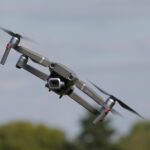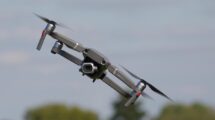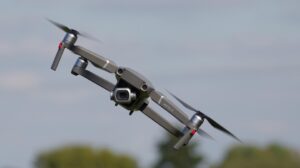Eyes in the Sky: How Drones Are Redefining Modern Warfare
In the realm of modern warfare, few technological advancements have captivated the military and public imagination quite like drones. Also known as unmanned aerial vehicles (UAVs), drones are transforming the battlefield into a complex theater of operations, where traditional combat tactics meet cutting-edge technology. The integration of drones into military strategies not only enhances surveillance and targeting capabilities but also reshapes ethical considerations and geopolitical dynamics.
The Evolution of Drones
Drones have come a long way since their humble beginnings as simple radio-controlled aircraft. Today’s military drones are equipped with advanced sensors, high-resolution cameras, and precision weaponry. They can conduct intelligence, surveillance, and reconnaissance (ISR) missions, often with capabilities that far exceed those of their human-operated counterparts.
The evolution of drone technology began during the Cold War as a means to gather intelligence without putting pilots at risk. However, it was not until the War on Terror in the early 2000s that drones found their primary application in combat. The United States, in particular, adopted drones as a key component of its military strategy, utilizing them for targeted strikes against high-value targets in remote regions.
Tactical Advantages
Drones offer several tactical advantages that are difficult for conventional forces to match:
-
Surveillance and Reconnaissance: Drones can fly at high altitudes for extended periods, providing real-time intelligence about enemy movements. This capability allows commanders to make informed decisions and adjust strategies while maintaining an element of surprise.
-
Precision Strikes: Armed drones can carry out surgical strikes with a level of precision that reduces collateral damage. The use of laser-guided munitions increases the likelihood of hitting intended targets while minimizing civilian casualties.
-
Cost-effectiveness: Operating drones is generally less expensive than deploying manned aircraft. They require fewer resources for training and maintenance, and they can be used in places deemed unsafe for human pilots.
- Force Multiplication: UAVs can extend the reach of conventional forces, allowing military operations to be conducted in areas that may be difficult to access. They can support ground troops, provide air cover, and engage in combat—all while minimizing risk to human lives.
Ethical and Legal Challenges
As drones become more integral to military operations, they bring ethical and legal challenges that cannot be overlooked. The capability to conduct strikes without direct human involvement raises questions about accountability and the potential for misuse. The concept of remote warfare, where operators are thousands of miles away from the conflict zone, blurs the lines between combat and civilian life.
International law regarding drone strikes is still a gray area. Issues such as sovereignty, attribution of actions, and the principle of proportionality in warfare become complicated when drones are used in foreign countries. High-profile cases of drone strikes that resulted in civilian casualties, such as those in Yemen and Pakistan, have led to widespread criticism and calls for stricter regulations governing their use.
Geopolitical Implications
Drones are not just reshaping battlefield tactics; they are also altering the balance of power in international relations. Nations with advanced drone technology have the advantage of conducting operations with reduced risk. This capability can embolden states to engage in conflict or intervene in situations where they may have previously hesitated.
The proliferation of drone technology has led less powerful states and non-state actors to acquire UAVs, leveling the playing field in some respects. For example, militant groups have begun using consumer-grade drones for surveillance and even as improvised weapons. This democratization of technology raises new security threats and challenges traditional notions of deterrence.
Future of Warfare
As drone technology continues to evolve, so too will its role in warfare. The development of autonomous drones—capable of making decisions without human intervention—poses both opportunities and risks. While such advancements could lead to more efficient and effective military operations, they also raise concerns over ethical implications and the potential for unintended escalations in conflict.
Moreover, advances in counter-drone technology indicate that future conflicts may also involve sophisticated measures to neutralize drone capabilities. Electronic warfare, kinetic countermeasures, and cyber tactics will become increasingly important in ensuring the effectiveness of military operations.
Conclusion
In conclusion, drones are undoubtedly redefining modern warfare in profound ways. They provide unparalleled advantages on the battlefield, but they also necessitate a reevaluation of ethical and legal frameworks governing their use. As nations grapple with these challenges, the future of conflict will likely continue to be shaped by this transformative technology. The skies are no longer just watched; they are now an active component of warfare, demanding careful consideration from military strategists and policymakers alike.1
Eyes in the Sky: How Drones Are Redefining Modern Warfare





























Add Comment